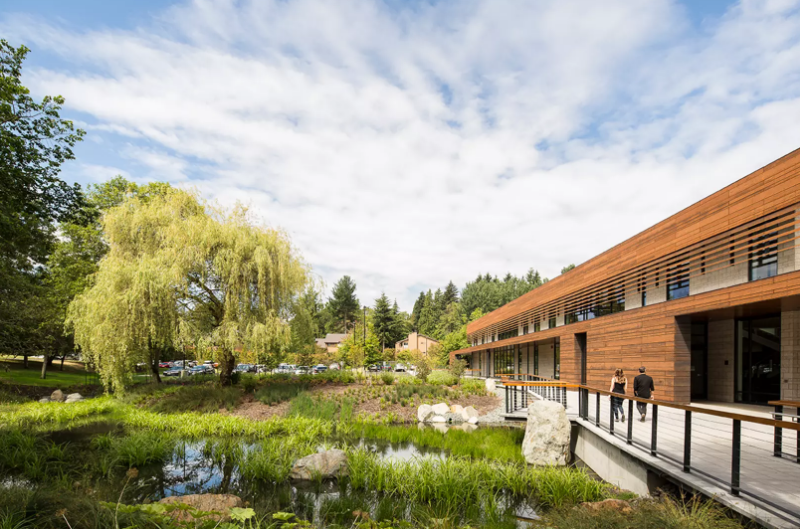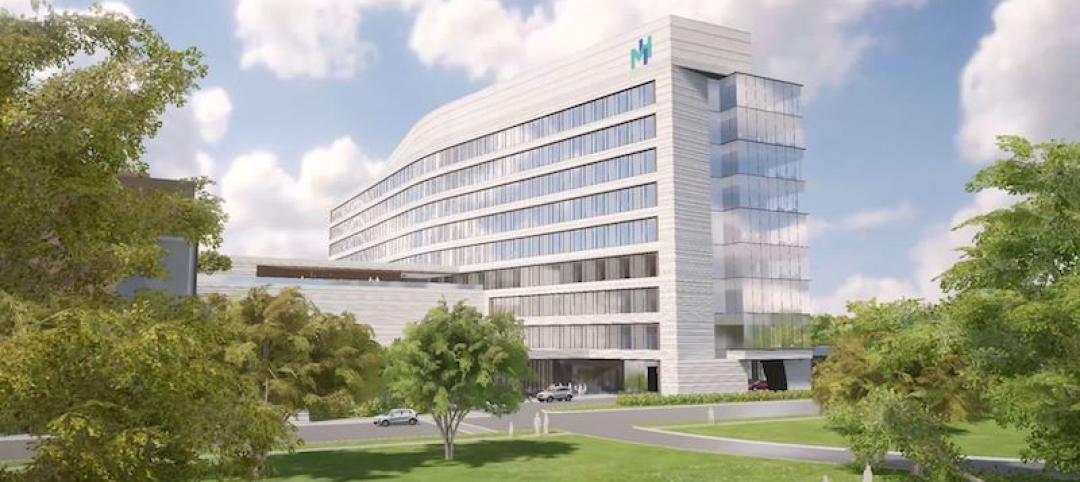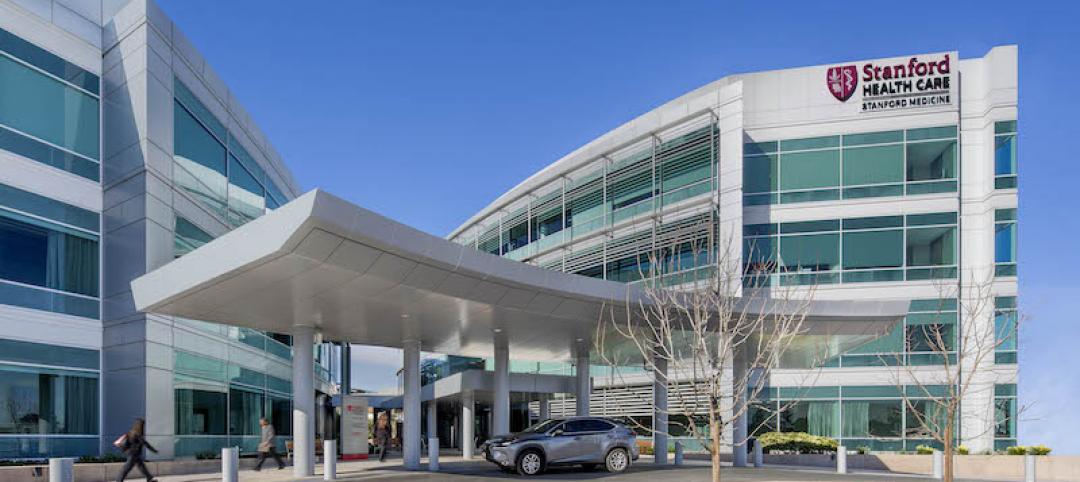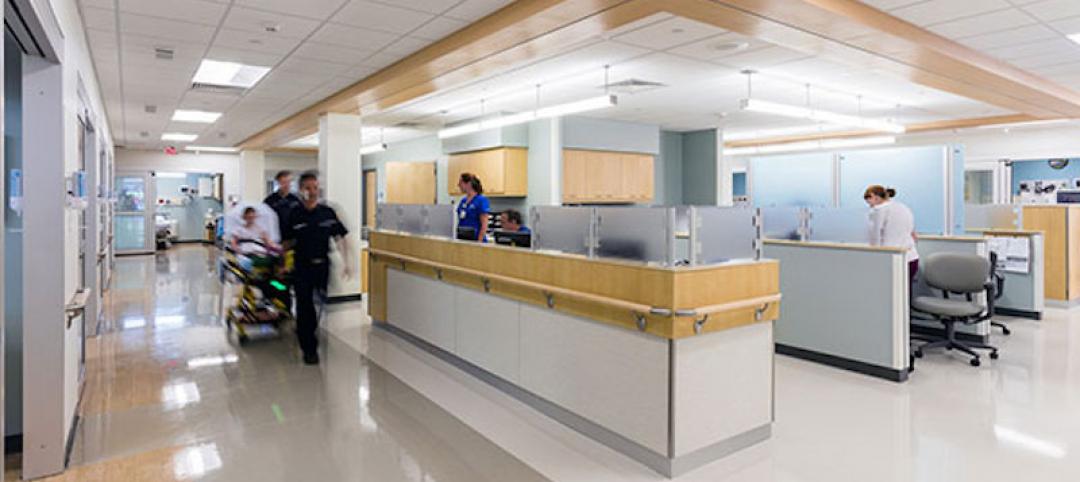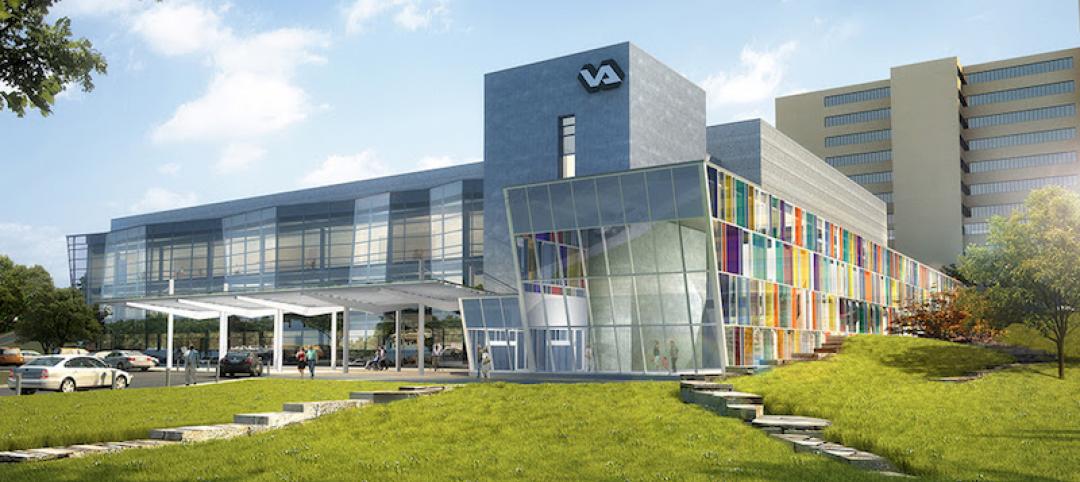The American Institute of Architects (AIA) Academy of Architecture for Health (AAH) has selected the recipients of the AIA Healthcare Design Awards program. The award program showcases the best healthcare building design and healthcare design-oriented research. Projects exhibit conceptual strengths that solve aesthetic, civic, urban, and social concerns as well as the requisite functional and sustainability concerns of a hospital.
Recipients were selected in four different categories:
Category A - Built: Less than $25 million (construction cost)
Category B - Built: More than $25 million (construction cost)
Category C - Renovations/Remodeled: Primarily built within existing hospital or clinical space
Category D - Unbuilt: must be commissioned for compensation by a client with the authority and intention to build
Category A
Harvey Pediatric Clinic; Rogers, Arkansas
Marlon Blackwell Architects
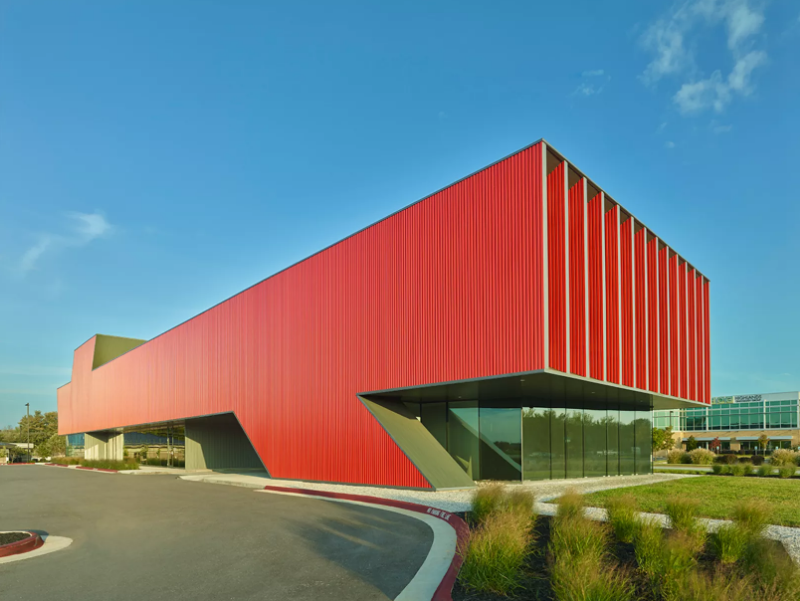 Photo: Timothy Hursley.
Photo: Timothy Hursley.
Situated in a fast-developing area, the Harvey Pediatric Clinic is an abstract figure set in contrast to the excess of materials, weak forms, and beige tones that make up the everyday suburban landscape that surrounds the building. The cayenne-color metal panel wraps the entire south side of the building, providing a strong identity for the practice. Patients enter the building, pass through and ascend a stair that is washed in blue light from the skylight above. Sixteen exam rooms are organized along a simple, clear circulation path defined by several skylights that bring natural light deep into the building.
Neighborcare Health, Meridian Center for Health; Seattle
NBBJ
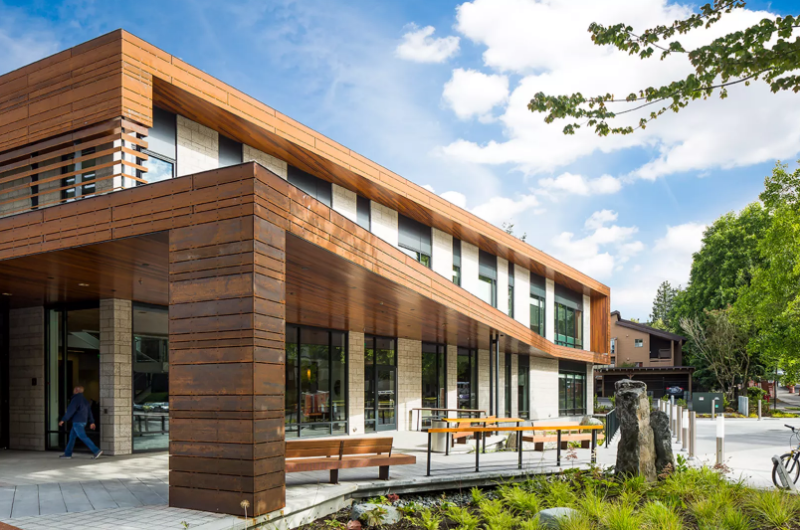 Photo: NBBJ/Sean Airhart.
Photo: NBBJ/Sean Airhart.
Partially funded by a federal grant, the Meridian Center for Health is a first of its kind: an integrated, one-stop model for health treatment and prevention for underserved Seattle-area residents. Uniting three health organizations under the same roof, the center provides low- to no-cost medical, dental, and mental health services for adults and children. Design elements include an open floor plan, a dramatic feature stair in the lobby, and a range of team and community spaces that remain available for neighborhood organizations after hours. The Center is tracking to receive LEED Gold certification.
Category B
Mercy Virtual Care Center; Chesterfield, Missouri
FORUM STUDIO
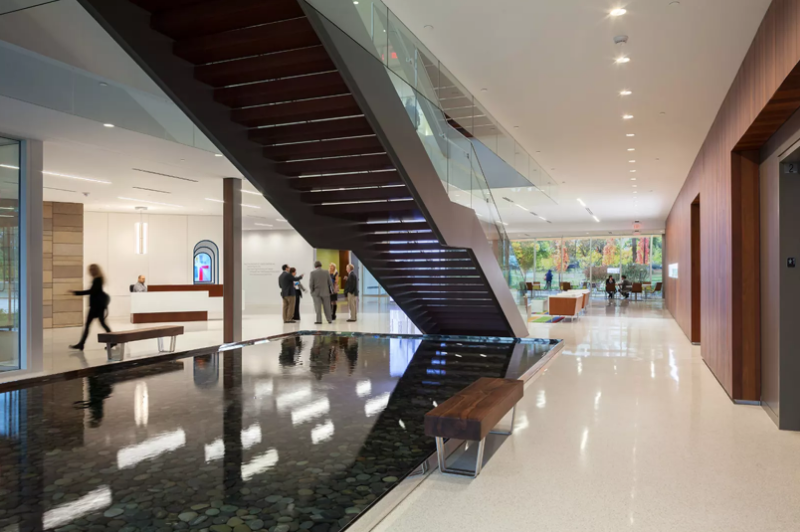 Photo: Sam Fentress.
Photo: Sam Fentress.
The Virtual Care Center exemplifies this Catholic health system’s bold commitment to the future of healthcare. This first-of-its-kind facility advances Mercy’s mission of transformative care while dramatically improving outcomes through improved patient management. The design blends the built with nature through an authentic use of materials and space. A palette of stone, glass, precast and wood coupled with flexible floor plates create an environment that fosters innovation, collaboration and patient centric care. The Virtual Care Center, the genesis of a national consortium of virtual providers, pioneers a new model of care.
UC San Diego Jacobs Medical Center; La Jolla, California
Cannon Design
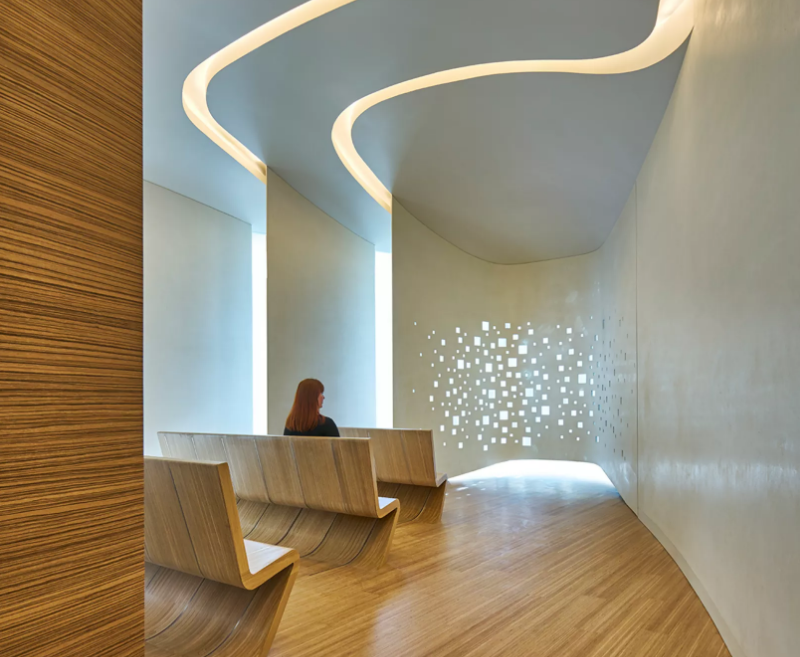 Photo: Christopher Barrett.
Photo: Christopher Barrett.
Reflective of UC San Diego’s vision toward the future intersections between technology and medicine, Jacobs Medical Center is designed as three hospitals in one with focus on women’s and children’s, cancer and specialty surgery. The tower is the cornerstone of a new campus identity focused on the future of health, pairing cutting-edge, modern medicine with best-in-class patient experience.
Category C
Advocate Lutheran General Hospital Cardiac Catheterization Suite; Park Ridge, Illinois
Philips Design and Anderson Mikos Architects
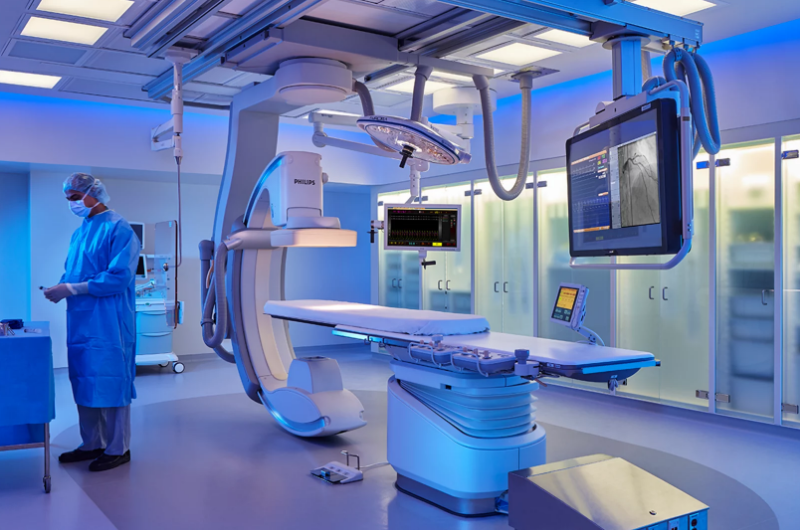 Photo: Craig Dugan Photography
Photo: Craig Dugan Photography
The design team worked closely with key stakeholders to achieve Advocate Health Care Heart Institute’s goal of improved customer experience, safety, and outcomes. The new cardiac catheterization suite improves the way people receive care through the complete transformation of patient, family and staff experiences. The resulting optimized flow and journey includes a transradial recovery lounge, labs that inspire confidence while improving safety, and a first-of-its-kind prep/recovery bay solution that enables a less stressful recuperation personalized for each patient. The Advocate Experience has been redefined through the service and spatial design transformation for this Suite.
Bayshore Dental; Whitefish Bay, Wisconsin
Johnsen Schmaling Architects
 Photo: John J. Macaulay.
Photo: John J. Macaulay.
This project is the ambitious reinvention of an abandoned building and its transformation into a state-of-the-art clinic for a young dentist and her small staff. The project’s rigorous architecture and meticulous details echo the ethos of the flawless efficiency, uncompromising precision and exacting purity at the center of the innovative dentistry performed here. Procedural flow strategies informed the clinic’s overall layout. A continuous ceiling plane leads patients from the light-filled reception to the individual operatories, each marked by green vertical panels and light strips that animate the clinic’s central corridor. White oak cabinetry and green accents complement the intentionally restrained interior palette, all contributing to a deliberately serene ambience intended to appease a sometimes-apprehensive clientele.
Category D
Ambulatory Surgical Facility; Kyabirwa, Uganda
Kliment Halsband Architects
 Rendering: Kliment Halsband Architects.
Rendering: Kliment Halsband Architects.
This independent, off-the-grid ambulatory surgical facility is a replicable prototype for the five billion people in the world who lack access to safe or affordable surgery. The building is composed of three functional elements: a reception pavilion with offices grouped around a family waiting area courtyard, an intermediate pavilion for pre-op and post-op activities, and a sterile pavilion with two operating rooms and related support spaces. These elements are sheltered under a solar panel shade structure, inspired by the banana plants on the site.
Related Stories
Healthcare Facilities | Jul 10, 2018
HGA designs acute care hospital for MetroHealth in Cleveland
The facility’s master plan creates a ‘hospital in a park.’
BIM and Information Technology | Jul 9, 2018
Healthcare and the reality of artificial intelligence
Regardless of improved accuracy gains, caregivers may struggle with the idea of a computer logic qualifying decisions that have for decades relied heavily on instinct and medical intuition.
Healthcare Facilities | Jun 28, 2018
New Stanford Healthcare outpatient building opens in Redwood City
The facility recently celebrated its grand opening with a ribbon-cutting ceremony.
Healthcare Facilities | Jun 26, 2018
The future of the ambulatory surgery centers and acuity levels
Offering the one-two punch of cost savings and convenience, ASCs are increasingly becoming the venue of choice for both physicians and patients.
Healthcare Facilities | Jun 26, 2018
Mesquite, Texas to receive 60-acre ‘wellness village’
Construction is anticipated to begin on the initial phase in mid-2019.
University Buildings | Jun 25, 2018
Virginia Commonwealth has at least three major expansion projects under construction
New buildings for outpatient care, engineering, and rehabilitation of serious injuries and debilities are scheduled to be completed in 2020.
Healthcare Facilities | Jun 6, 2018
French 'Alzheimer’s Village' designed to resemble a medieval bastide
The new facility will provide research on a new way of treating Alzheimer’s patients.
Healthcare Facilities | May 29, 2018
Will telemedicine change the face of healthcare architecture?
Telemedicine is a broad term that covers many aspects and mediums of care, but primarily it refers to the use of video monitors to allow a virtual face to face consultation to take place.
| May 24, 2018
Accelerate Live! talk: Security and the built environment: Insights from an embassy designer
In this 15-minute talk at BD+C’s Accelerate Live! conference (May 10, 2018, Chicago), embassy designer Tom Jacobs explores ways that provide the needed protection while keeping intact the representational and inspirational qualities of a design.
Healthcare Facilities | May 24, 2018
The design of the new Omaha VA Ambulatory Care Center incorporates veteran symbolism throughout the building
Leo A Daly designed the facility.


